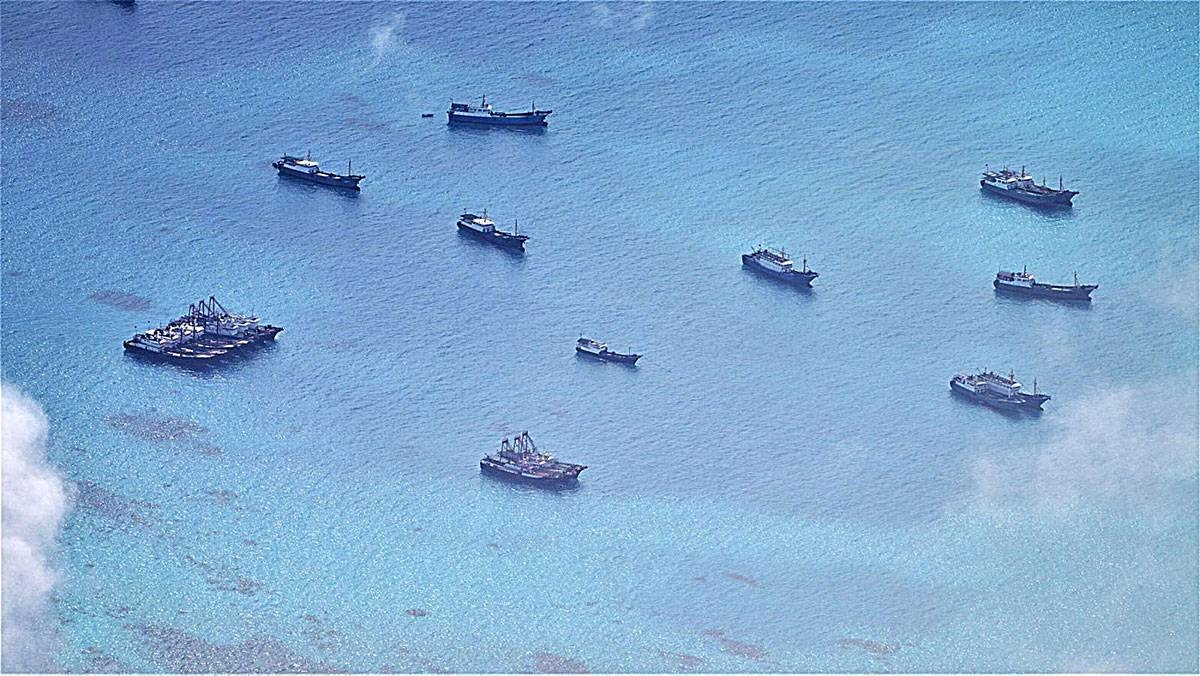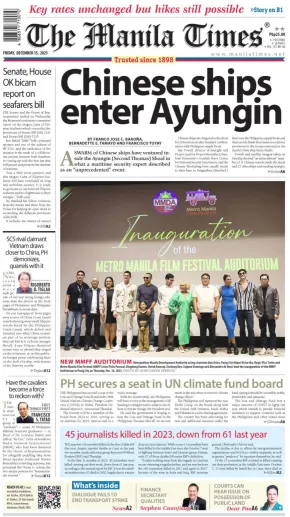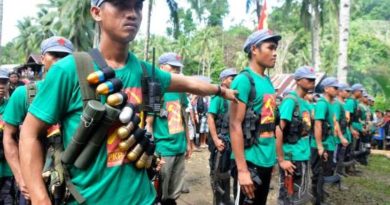HEADLINE-ASIA GEOPOLITICS | MANILA- Chinese ships enter Ayungin


(UPDATE) A SWARM of Chinese ships have ventured inside the Ayungin (Second Thomas) Shoal in what a maritime security expert described as an “unprecedented” event.
Chinese ships also lingered in the shoal for 24 hours more after Sunday’s confrontation with Philippine supply boats.
Ray Powell, director of SeaLight and Project Lead for Project Myoushu at Stanford University’s Gordian Knot Center for National Security Innovation, said the Chinese blockading force usually return to their base in Panganiban (Mischief ) Reef once the Philippine supply boats and their escorts finish their mission to deliver provisions to the troops stationed in the derelict Navy ship Sierra Madre.
Powell said satellite imagery taken on Monday showed “an extraordinary” number of 11 Chinese vessels inside the shoal and 27 other ships surrounding Ayungin, including vessels involved in Sunday’s incident.
He said two of the Chinese vessels were “rafted together” near the northwest corner of the shoal about 2 kilometers south of where the Sierra Madre was grounded.
Powell said none of the ships had their broadcasting automatic information system (AIS) on. He said on Thursday the Chinese vessels remained around the shoal until Monday afternoon, with some even venturing inside.
“It’s quite rare to see Chinese vessels enter the shoal’s interior at all, but 11 is certainly the highest number we’ve yet observed,” he said.
“This highly unusual invasion of the shoal’s interior appears to have been a calculated show of force by Beijing,” he said.
Meanwhile, 27 Chinese militia ships and the China Coast Guard (CCG) vessel 5402, which was involved in several confrontations w
More ships were outside the shoal, including CCG 21556, the ship that fired its water cannon at and collided with the Unaiza May 1, the supply boat that had on board Armed Forces of the Philippines Chief of Staff Gen. Romeo Brawner and Western Command’s Commander Vice Admiral Alberto Carlos on Sunday.
Powell said this capped off a “deeply concerning and escalatory weekend of very aggressive behavior” by China.
Philippine vessels and the resupply boats were also subjected to reckless and dangerous maneuvers by CCG and Chinese Maritime Militia (CMM) vessels.
On Saturday, three vessels of the Bureau of Fisheries and Aquatic Resources (BFAR) were bombarded by water cannons by a CCG ship off Bajo de Masinloc (Scarborough Shoal).
Japan, meanwhile, raised “serious concern over actions which increase regional tensions, including recent dangerous actions that caused a collision between Chinese and Filipino ships.”
In a statement Wednesday, Japan’s Ministry of Foreign Affairs reiterated that it will continue to cooperate with regional groups like the Association of Southeast Asian Nations (Asean), and the United States to protect free, open and peaceful seas.
The ministry said Japan lauded the Philippines for having “consistently complied” with the 2016 Arbitral Tribunal award concerning maritime disputes between the Philippines and China in the South China Sea.
The Permanent Court of Arbitration invalidated China’s claim on the strategic waterway, which encroached on the Philippines’ exclusive economic zone (EEZ).
The Philippines has “shown its commitment to the peaceful settlement” of disputes in the disputed waters.
Japan “opposes any unilateral attempts to change the status quo by force as well as any actions that increase tensions in the South China Sea,” the ministry added.
In a joint statement last February, Tokyo concurred with Manila’s “long-standing objections to unlawful maritime claims, militarization, coercive activities and threat or use of force” in the South China Sea, the ministry said.
Last Monday, the Department of Foreign Affairs (DFA) summoned Chinese Ambassador to the Philippines Huang Xilian to protest the CCG’s latest aggressive actions in the West Philippine Sea.
On Wednesday, a top US defense official and security experts from Japan and the Philippines pressed China to cease its provocative behavior in the West Philippine Sea (WPS).
Unlawful
In phone calls emanating from the White House, US National Security Adviser Jake Sullivan, National Security Adviser Akiba Takeo of Japan, and National Security Adviser Eduardo Año of the Philippines expressed their concerns about China’s recent dangerous and unlawful action in Ayungin and Bajo de Masinloc.
A White House readout said Sullivan also echoed the US reaffirmation of its ironclad alliance commitments to both Japan and the Philippines.
The three security officials underscored the importance of enhancing trilateral cooperation and committed to continue carrying out the initiatives discussed during their meeting in June.
The initiatives include efforts to improve defense and security capabilities, particularly on cybersecurity; and maintaining a free and open maritime order.
Pentagon Press Secretary Maj. Gen. Pat Ryder also provided excerpts from separate phone calls between US Defense Secretary Lloyd Austin 3rd and Defense Secretary Gilberto “Gibo” Teodoro Jr. highlighting the coercive and unlawful actions by China in the South China Sea.
The two top defense officials also noted the unprovoked use of acoustic devices, water cannons, and reckless maneuvers, resulting in collision and damage to Philippine vessels on legal resupply missions inside the EEZ.
Austin repeatedly expressed US support for the Philippines in defending sovereign rights in accordance with international law.
He also stressed the importance of the Mutual Defense Treaty between the Philippines and the US that covers the two countries’ armed forces, public vessels, and aircraft, including their Coast Guards, anywhere in the Pacific to include the South China Sea.
Austin commended the AFP’s professionalism in the face of unlawful behavior by China.
The two secretaries agreed “to bolster bilateral and multilateral coordination with other like-minded partners to enhance interoperability and accelerate the modernization of the Armed Forces of the Philippines.”
They also reaffirmed their countries’ “shared vision of a free and open region grounded in transparency, the rule of law, respect for sovereignty, and the peaceful resolution of disputes.”


 Memento Maxima Digital Marketing
Memento Maxima Digital Marketing







